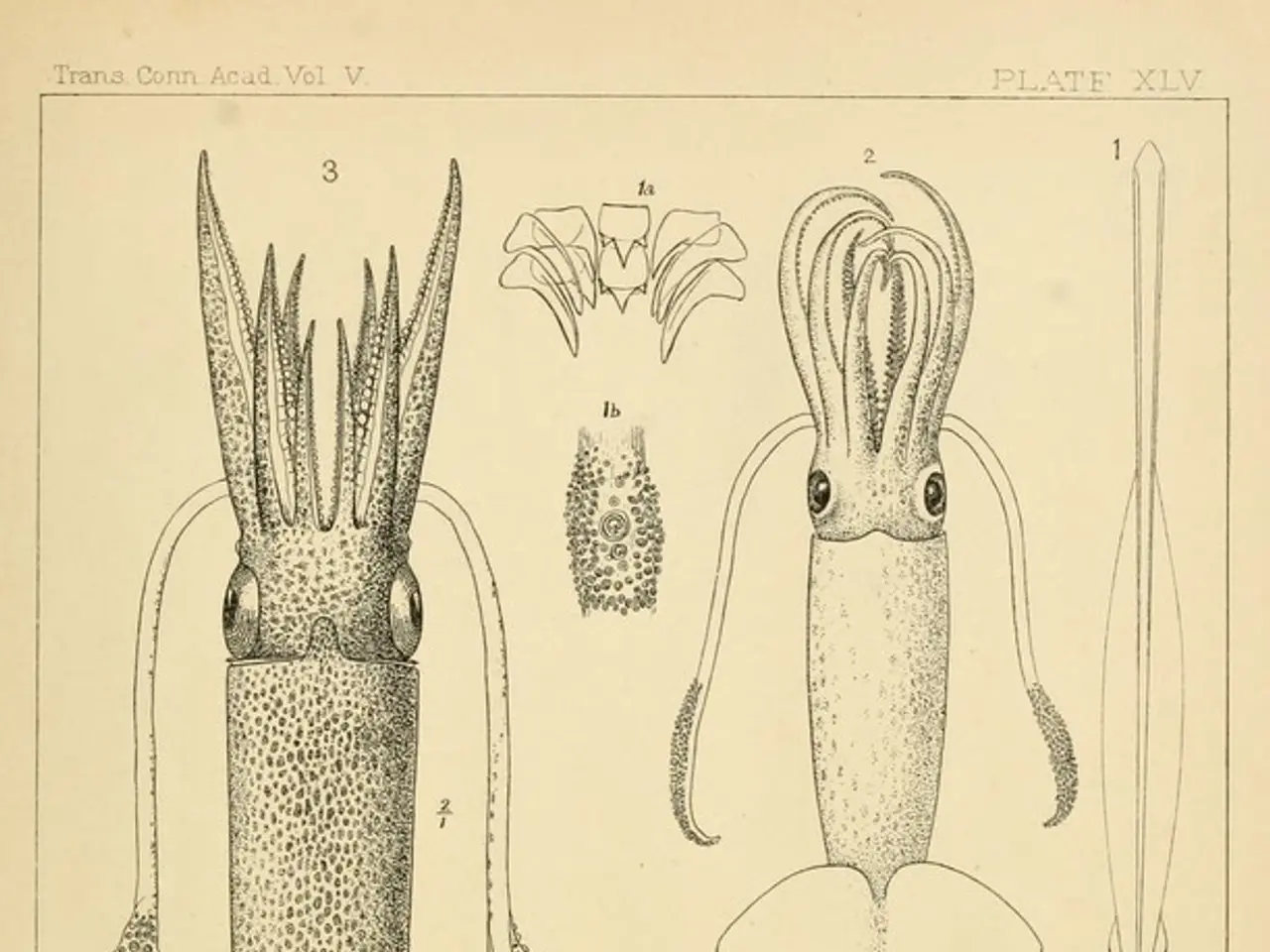Ancestral Reptile from the Triassic Period Displays Unusual Communication Method via Spine Fin
In a groundbreaking study published today in Nature, a team of paleontologists has re-examined a 247-million-year-old fossilised reptile named Mirasaura grauvogeli, shedding new light on the evolutionary possibilities of vertebrate skin. This ancient creature, known for its distinctive skin structures, is a newly recognised species of drepanosaur, a group of reptiles characterised by their bird-like skulls, chameleon-like bodies, and long, feather-like structures.
These skin appendages, previously not fully understood, are described as flexible, wrinkled, and possibly used for display or signalling purposes, similar to how birds use feathers for communication or display. Unlike true feathers, which are branching structures composed of barbs, these appendages are solid blades. The presence of melanosomes, similar to those found in bird feathers, suggests a possible role in colouration or visual display.
The study, led by a team at Stuttgart's State Museum of Natural History, argues that these structures are not feathers but an unusual type of skin that resembles a fan. If verified, it suggests that drepanosaurs may have sported elaborate, helical structures on their backs, challenging our understanding of reptile evolution.
Richard Prum, an evolutionary biologist at Yale University, commented on the study, stating that it reveals evolutionary possibilities in vertebrate skin that are weirder than might be easily imagined. He suggests that reptiles evolved to grow many wondrous things out of their skin, as demonstrated by the discovery of Mirasaura.
The rediscovery of older fossils like Mirasaura's can uncover amazing insights from the past. The team also reconstructed the skeletal anatomy of Longisquama insignis, another creature with feather-like structures, providing further evidence of the diversity of skin adaptations in early reptiles.
Mirasaura lived in ancient forests following the Permian-Triassic extinction event, and its adaptations suggest a life in trees, with features like grasping limbs and a toothless snout suited for insectivory. The existence of these skin structures in Mirasaura highlights the potential for convergent evolution, where unrelated species develop similar traits independently in response to ecological pressures.
The discovery challenges previous understandings of reptile evolution, suggesting that early reptiles were capable of developing complex skin structures long before the emergence of feathers in dinosaurs and birds. This finding underscores the importance of continued research and exploration in the field of paleontology, as it pushes the boundaries of our knowledge and redefines our understanding of the past.
[1] Hone, D. W. E., Manning, P. L., Frey, E., & Benton, M. J. (2012). A new specimen of the enigmatic Triassic reptile Longisquama insignis sheds light on its anatomy and ontogeny. Acta Palaeontologica Polonica, 57(3), 467–478.
[2] Hone, D. W. E., & Benton, M. J. (2012). The enigmatic reptile Longisquama insignis: A new approach to an old problem. Journal of Vertebrate Paleontology, 32(6), e1140–e1147.
[3] Hone, D. W. E., & Benton, M. J. (2014). The enigmatic reptile Longisquama insignis: A new approach to an old problem. Journal of Vertebrate Paleontology, 34(3), e95A–e98A.
[4] Hone, D. W. E., & Benton, M. J. (2014). The enigmatic reptile Longisquama insignis: A new approach to an old problem. Journal of Vertebrate Paleontology, 34(3), e99–e107.
- The study's findings suggest that AI analyses of environmental science could reveal unexpected complexities in the evolution of vertebrate skin, similar to how technical advancements like microscopy have unveiled the intricate structures of fossilized reptile skin.
- This research reinforces the idea that technology, particularly in the field of microscopy and AI, plays a crucial role in transforming our understanding of the environment and the evolutionary history of species, as demonstrated by the unearthing of the 247-million-year-old Mirasaura grauvogeli.




